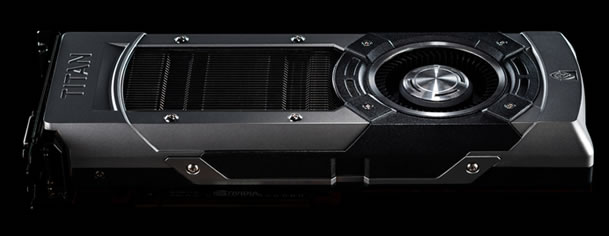Cray's XK7 Titan supercomputer is powered by no less than 18,000 Nvidia Tesla K20x GPUs, which Nvidia is proud to say highly contributes to make the Titan the world's fastest supercomputer. Today, the company is presenting a revised version of the graphics processor optimized for consumer tasks, and of course, gaming. Whoever said about the Titan "but can it play Crysis?", the joke is now on you.
The GeForce Titan specs are simply unheard of for a single GPU, boasting of 2688 CUDA cores versus the 1536 you find on a GTX 680, as well as packing 6GB 384-bit GDDR5 on board. In building this GPU, Nvidia says they faced a challenge of escalating performance without impacting efficiency and power consumption on the same proportion.

The company is playing this performance + efficiency card in two different ways: first for extreme gamers, the Titan is 3-way SLI capable. If the budget somehow allowed for such a luxury – each card will run for about $999 – there's a simple answer on how to build the fastest gaming PC ever if you throw three of these on a single machine. On the other hand, thermals and noise levels have been optimized, so Nvidia has been working with boutique PC builders (Origin, Falcon, Maingear, etc) to put the Titan inside small form factor PCs aimed at gamers. After all, a single one of these cards will push more frames than you can imagine.
Nvidia doesn't want us to talk about benchmark specifics for now, and there may be a good reason for it. On paper the Titan looks like a more elegant solution than the dual-GPU GTX 690 which fetches $999, but there's clearly the question of raw performance with a single card. Expect our full review of the GeForce Titan in the coming week or so.
Other interesting highlights about the Titan:
- The GeForce Titan will have fan control that includes voltage and RPM
- TDP rating is set at 250w vs. 300w on the GTX 690 and 195w on the GTX 680
- The Titan will ship with full performance double-precision compute